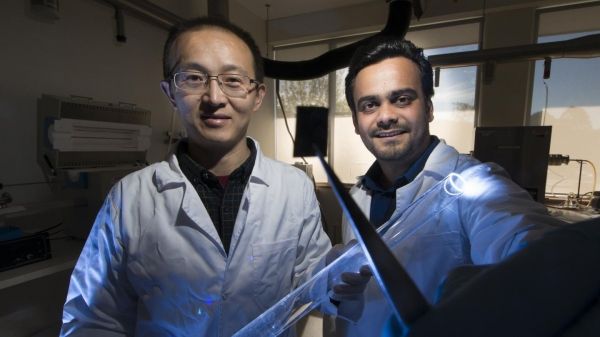Engineers at ANU have invented a semiconductor with organic and inorganic materials that can convert electricity into light very efficiently, and it is thin and flexible enough to help make devices such as mobile phones bendable.
The invention also opens the door to a new generation of high-performance electronic devices made with organic materials that will be biodegradable or that can be easily recycled, promising to help substantially reduce e-waste.
The huge volumes of e-waste generated by discarded electronic devices around the world is causing irreversible damage to the environment. Australia produces 200,000 tonnes of e-waste every year - only four per cent of this waste is recycled.
The organic component has the thickness of just one atom - made from just carbon and hydrogen - and forms part of the semiconductor that the ANU team developed. The inorganic component has the thickness of around two atoms. The hybrid structure can convert electricity into light efficiently for displays on mobile phones, televisions and other electronic devices.
Read more at Australian National University
Image: This is associate professor Larry (Yuerui) Lu (left) and PhD researcher Ankur Sharma from the ANU Research School of Engineering. (Credit: Jack Fox, ANU)


